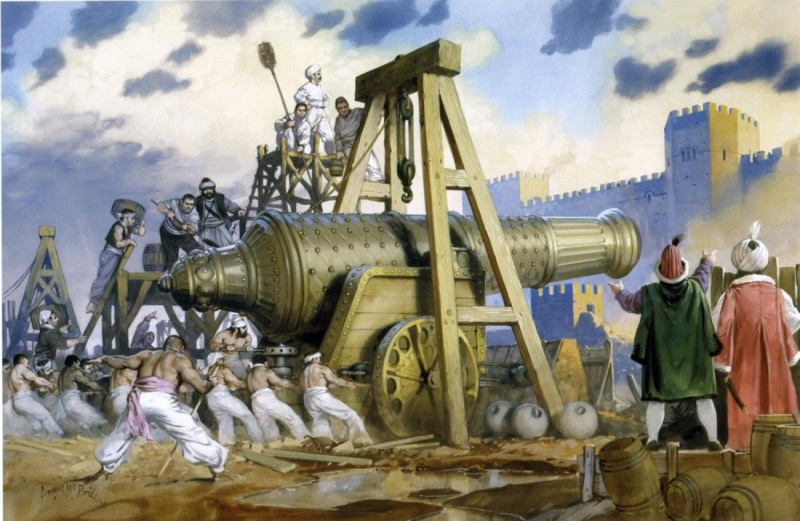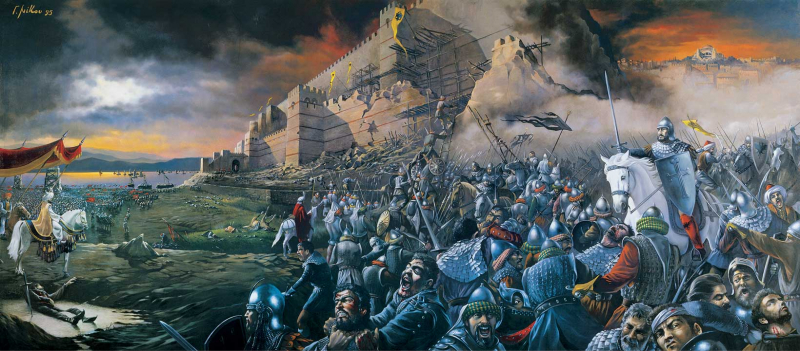Constantinople Fell to a Massive Cannon
There has never been a single event that has brought an Empire to its knees. The Byzantine Empire is no exception. Many elements, ranging from economic to political, contributed to the fall of the once-mighty Empire. But, when it comes to how Constantinople fell, one piece of military equipment, the enormous cannon commissioned by Sultan Mehmed II, deserves a lot of responsibility. In 1,000 years, Constantinople had been attacked 23 times, and not a single army had made it past the city's walls. Constantinople was already in decline, economically devastated and losing ground on all fronts. To assist bring down the walls, the Sultan commissioned the world's largest cannon. He received a 27-foot-long bronze cannon with eight-inch-thick walls and a barrel 30 inches in diameter, large enough for a man to climb inside.
The cannon discharged cannonballs weighing around half a ton. It required 200 men and 60 oxen to haul the cannon 140 miles over the countryside to Constantinople. They make about two and a half miles per day. When the cannon arrived, it more than fulfilled its promise. The carnage was unprecedented in history. It shattered defensive walls that had stood for thousands of years. The strong fortifications of the once unconquerable city had been decimated by a single weapon. Even though the enormous cannon could only be fired seven times each day, the psychological impact was significant.












